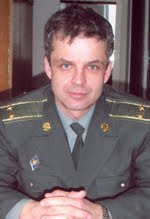Famous Soviet artist Nikolai Zhukov during the Second World War served as an artilleryman then worked in the editorial office of an army newspaper on the Kalinin Front and at the same time as a war correspondent for the newspaper Pravda.
From the summer of 1943 to 1973, Zhukov was the artistic director of the Mitrofan Grekov Studio of Military Artists. A group of artists from this studio in 1959 created a highly artistic diorama in the Museum of the Battle of Poltava, which reflects the last minutes of the great battle that took place on June 28, 1709.
The diorama in the Museum of the Battle of Poltava created in 1959 by the Mitrofan Grekov Studio of Military Artists.
In mid-January 1946, Nikolai Zhukov, as a correspondent for the newspaper “Pravda”, was sent to the Nuremberg trials as a member of the Soviet delegation. As a person who went through the war from the first to the last day, capturing every day in dozens of drawings, he simply had to attend this terrible trial. For forty days Zhukov was in the courtroom of the tribunal, trying to most fully record all the stages of the historical trial. During his time he made over four hundred drawings: he sketched witnesses of the Soviet prosecution, prosecutors of the Soviet Union, judges and invited guests, correspondents from all countries, as well as all war criminals and their lawyers. These drawings were quickly made in incredibly difficult conditions, from the press places located far from the dock and the judges.
Judges at the Nuremberg trials
Geoffrey Lawrence was the main British judge during the Nuremberg trials and President of the Judicial group.
Hermann Göring and Albert Speer
Alfred Rosenberg and Ernst Kaltenbrunner
Joachim von Ribbentrop and Wilhelm Keitel
Correspondents. 1946. Nuremberg trials










0 comments:
Post a Comment